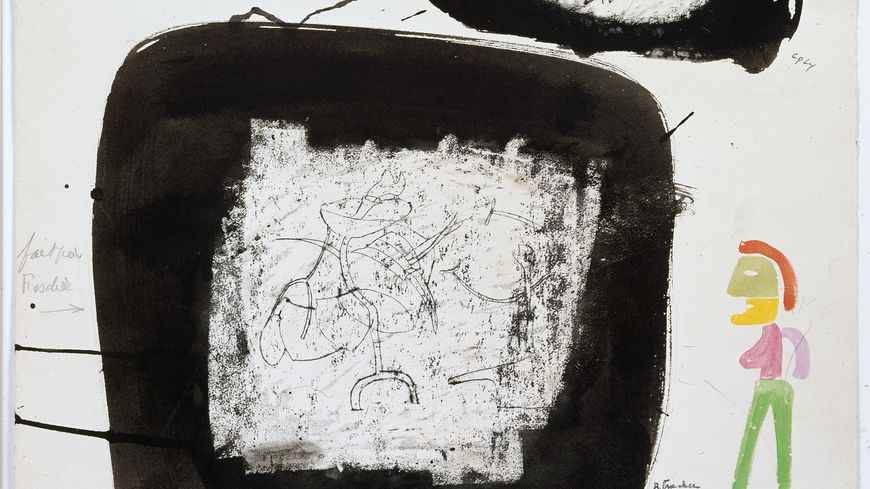France Bleu provence in partnership with the Mucem presents the “Amitiés” exhibition, resulting from collective creativity. Exhibition designed and organized by the Mucem in partnership with the Kunstmuseum Wolfsburg
Harness creative energies
In 1871, at the Hôtel des Étrangers, in the Latin Quarter, at the time of La Commune de Paris—in which several of them took part—a dozen of the greatest rebel poets, including Arthur Rimbaud, Paul Verlaine, Charles Cros, Germain Nouveau, André Gill came together around a common project, co-written and drawn, out of the ordinary and, in more than one respect, subversive: theZutic Album.
It was one of the first and most important collective works announcing the modern spirit in Europe.
With regard to the artistic production of the 20th and 21st centuries, it appears that many collaborations between artists are the fruit of friendships, fortuitous or deliberate encounters (such as theEye Cacodylate of Picabia and his relatives, in 1921, or as the Large Collective Antifascist Painting, a choral cry of revolt against colonialism and torture in 1960). Here, it is the spontaneous mode of production, making it possible to multiply the creative energies, which is more important than any other technical or formal concern.
Below: Jean-Jacques Lebel, Enrico Baj, Roberto Crippa, Gianni Dova, Erró, Antonio Recalcati. Large Collective Antifascist Tableau, 1960. Excerpt from the film by Hamid Bousmah, Les Traces de l’Épreuve, 1997 © ADAGP, Paris 2022; © 1997 – IDEA Productions / IVP / HB
The route of the exhibition
- Exquisite Corpses and their variations : initiated in 1925 by Yves Tanguy and André Masson, the Exquisite Corpse is a ” folded paper game which consists in having several people compose a sentence or a drawing, without any of them being able to take into account the collaboration or previous collaborations. The example, which has become classic, which gave its name to the game, is in the first sentence obtained in this way: The exquisite-corpse-will-drink-the-new-wine. »
- Political aims and artistic manifestos : The works presented in this section highlight the importance of artists’ commitment both political, in the broad sense of the term, and artistic.
- Evidence of friendships : Collective drawing : Game which consists in intervene with several on the same sheet, sometimes with collages or drawings, such as the Marseille gamemade in 1941, by artists and writers waiting for a boat to go into exile outside of Nazi-occupied France.
- The events: Dada, happenings and Fluxus ; Happenings are privileged moments of collective creativity. It is from 1957 that the word is used by the American artist Allan Kaprow. the spontaneous characterand the active public participationare the two essential components of the happening, generally on the initiative of one or more artists, and which only leave traces as photographs, films and testimonies of experienced sensations.
- laughter and obscenity : Born with Dada, thesubversive humoris another strong characteristic of some friendships. Laughing yellow or laughing out loud, the two are often associated in emotional relationships that are often stormy.
Below: Mark Brusse and many friends. Double relief in 18 colors, New York, 1966-1967. Wood, metal, marker, paint, varnish. Center Pompidou, National Museum of Modern Art / Center for Industrial Creation © Adagp, Paris, 2022; photo © Center Pompidou, MNAM-CCI, Dist. RMN-Grand Palais / Philippe Migeat

Artistic and cultural program around the “Amitiés” exhibition
- Group performance
- Exhibition open house
- Meetings, readings, shows and concerts
- Family vacations—Long live friendship!
Find the program here

– mucem
Friendship. From October 2022 to February 2023
Curators: Jean-Jacques Lebelvisual artist, writer, creator of artistic events and Blandine ChavanneGeneral Heritage Curator. Scenography:Floriane Pic and Joris Lipsch—Studio Matters
Practical information and reservations
Illustration photo of the article: Made by Bill Copley, Roberto Matta, Victor Brauner, December 16, 1953. Brush and gouache, India ink, scratched wax on Pur Fil watermarked paper, Marais. Modern and contemporary art museum of Saint-Étienne Métropole. Bequest Jacqueline Victor-Brauner, 1987 © Adagp, Paris, 2022; photo © Yves Bresson/Museum of modern and contemporary art of Saint-Étienne Métropole
